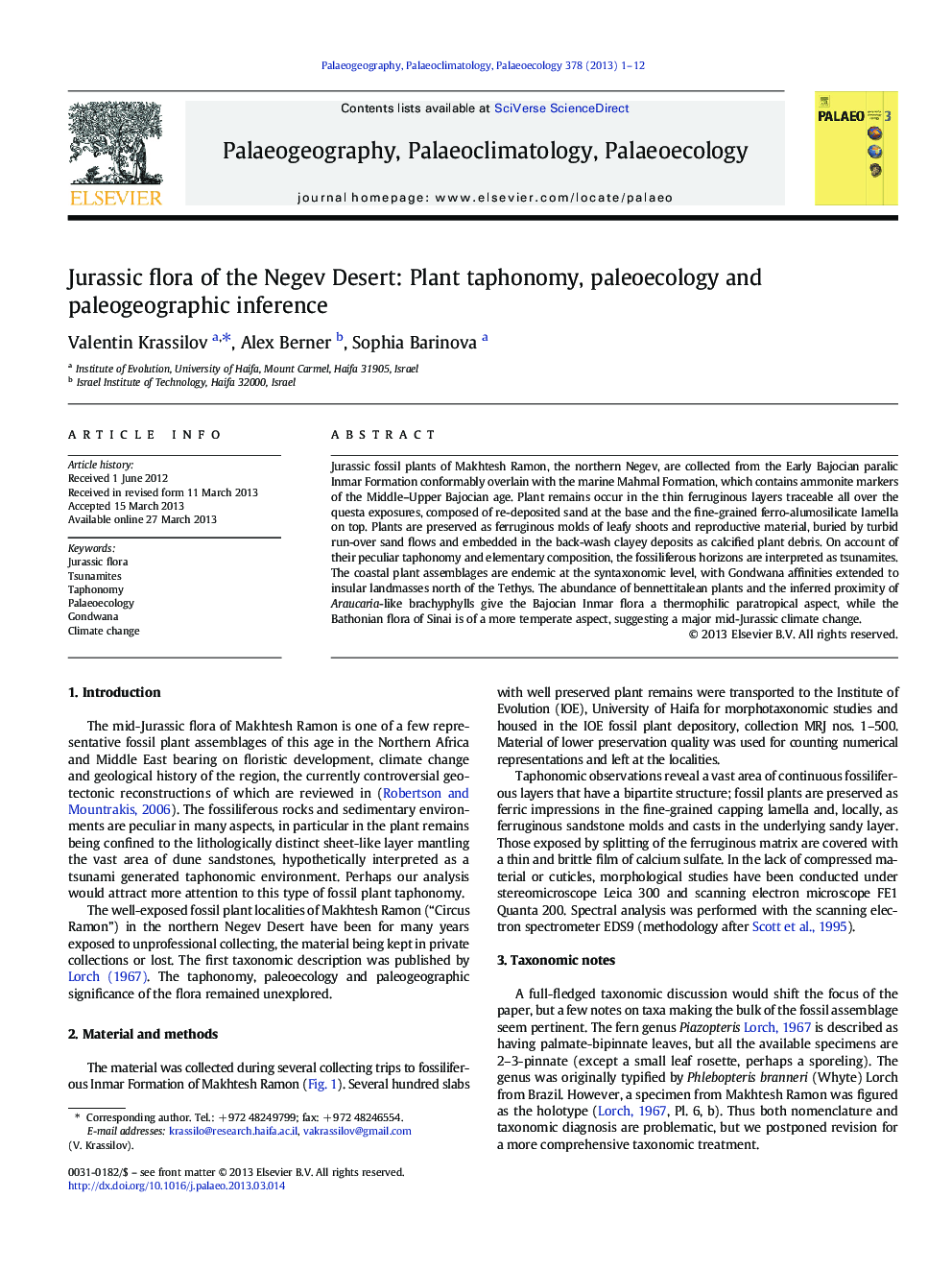| Article ID | Journal | Published Year | Pages | File Type |
|---|---|---|---|---|
| 4466557 | Palaeogeography, Palaeoclimatology, Palaeoecology | 2013 | 12 Pages |
•The Jurassic plant bearing beds of Makhtesh Ramon are interpreted as tsunamites.•Spectrometric analysis indicates a tidal flat provenance of the material.•The plant associations suggest insular land with Gondwana t connections.•The mid-Jurassic floristic change testifies to a major climate change.
Jurassic fossil plants of Makhtesh Ramon, the northern Negev, are collected from the Early Bajocian paralic Inmar Formation conformably overlain with the marine Mahmal Formation, which contains ammonite markers of the Middle–Upper Bajocian age. Plant remains occur in the thin ferruginous layers traceable all over the questa exposures, composed of re-deposited sand at the base and the fine-grained ferro-alumosilicate lamella on top. Plants are preserved as ferruginous molds of leafy shoots and reproductive material, buried by turbid run-over sand flows and embedded in the back-wash clayey deposits as calcified plant debris. On account of their peculiar taphonomy and elementary composition, the fossiliferous horizons are interpreted as tsunamites. The coastal plant assemblages are endemic at the syntaxonomic level, with Gondwana affinities extended to insular landmasses north of the Tethys. The abundance of bennettitalean plants and the inferred proximity of Araucaria-like brachyphylls give the Bajocian Inmar flora a thermophilic paratropical aspect, while the Bathonian flora of Sinai is of a more temperate aspect, suggesting a major mid-Jurassic climate change.
